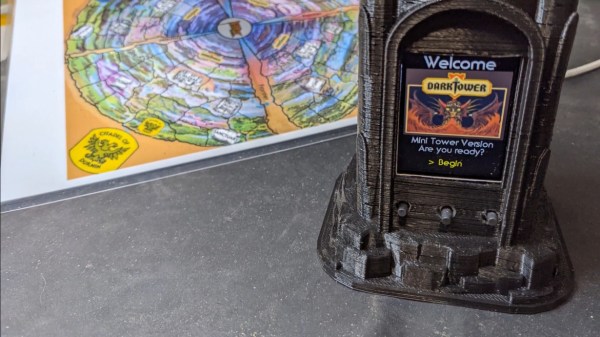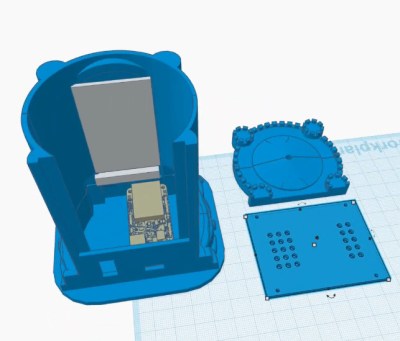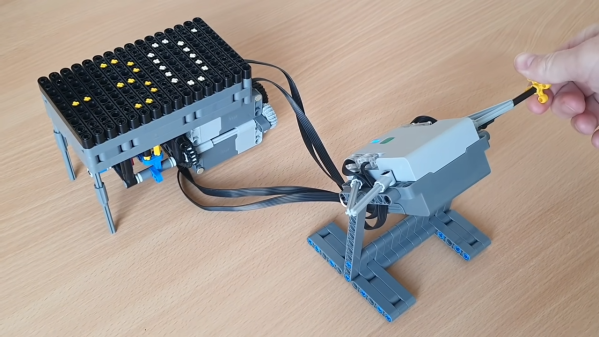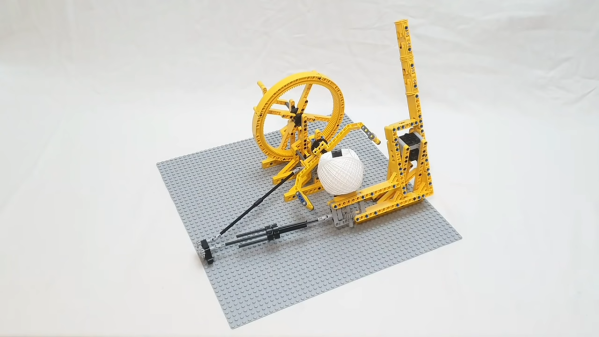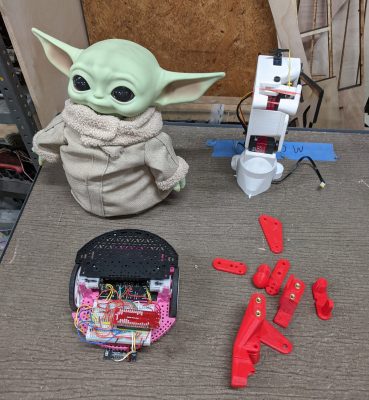
When it comes to sci-fi, it’s hard to go past Star Wars, and many submissions to our contest land in that exact universe. [Kevin Harrington]’s entry is one such example, with his animatronic Baby Yoda that’s exactly as cute as you’d hope it would be.
The build is based on a Pololu Romi chassis, a simple two-wheeled differential-drive robot platform. It’s paired with a robot arm in the form of Hephaestus Arm 2, which provides the articulation for the precocious little creature. An ESP32 microcontroller serves as the brains of the operation, controlling all the servos and motors that make baby Yoda move. Control is via WiFi, using a website hosted on the ESP32 via RBE1001lib.
The animatronic baby Yoda would surely be a hit sitting on one’s shoulder at any sci-fi convention. Overall, it’s a simple robot that becomes more personable by skinning it with an adorable toy. It’s not the first baby Yoda (or Grogu) that we’ve seen, either – the popular character has inspired builds before, too! Video after the break.
Continue reading “2022 Sci-Fi Contest: The Animatronic Baby Yoda You’ve Always Wanted”


